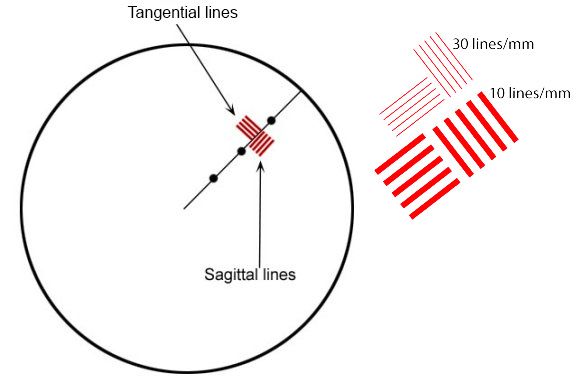Geek Articles
Just MTF Charts: Canon Prime Lenses
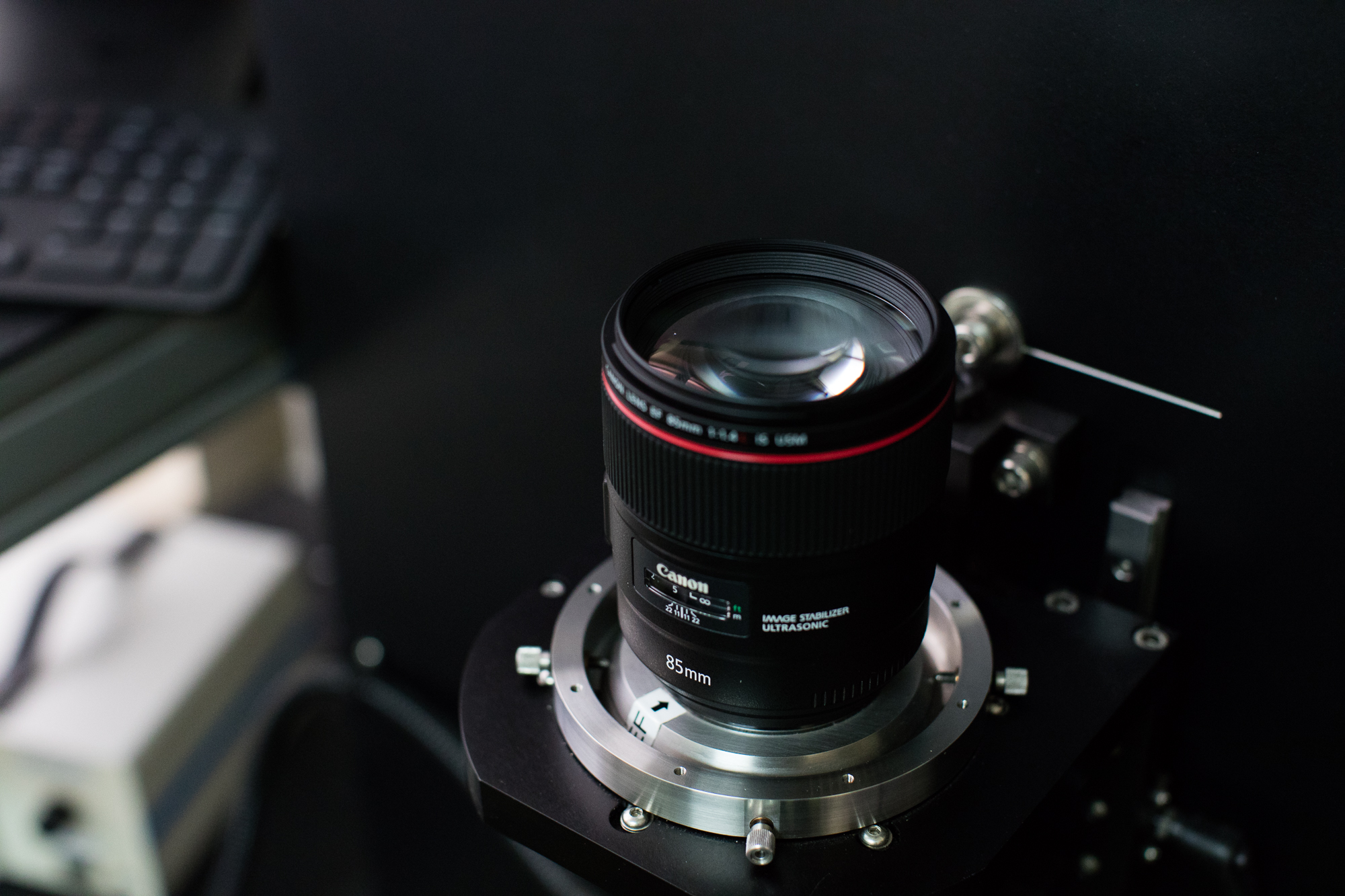
This is the first post of a series of posts publishing all of our MTF results so that methodology is consistent, easy to find, and up-to-date. (For some of the older lenses there are graphs done with older software floating around. For a couple of lenses there are incorrect graphs done before we worked out all of the details for sensor glass in the testing pathway. These are all current.)
Otherwise, there are no comparisons, no commentary, just the test results for you to use and abuse as you see fit. The major purpose is just to get these MTF charts organized and in one place where you can find them.
Just to avoid 4,200 comments: these are all average MTFs from multiple copies. They are all measured at the widest aperture. Yes, I know you’d like several apertures. I haven’t got the time or money to do that. Sorry.
A Quick How to on Reading MTF ChartsIf you’re new here, you’ll see we have a scientific methodology to our approach, and use MTF charts to measure lens resolution and sharpness. All of our MTF charts test ten of the same lenses, and then we average out the results. MTF (or (or Modulation Transfer Function) Charts measure the optical potential of a lens by plotting the contrast and resolution of the lens from the center to the outer corners of the frame. An MTF chart has two axis, the y-axis (vertical) and the x-axis (horizontal). The y-axis (vertical) measures how accurately the lens reproduces the object (sharpness), where 1.0 would be the theoretical “perfect lens”. The x-axis (horizontal) measures the distance from the center of a lens to the edges (measured in millimeters where 0mm represents the center, and 20mm represents the corner point). Generally, a lens has the greatest theoretical sharpness in the center, with the sharpness being reduced in the corners. Tangential & Sagittal LinesThe graph then plots two sets of five different ranges. These sets are broken down into Tangential lines (solid lines on our graphs) and Sagittal (dotted lines on our graphs). Sagittal lines are a pattern where the lines are oriented parallel to a line through the center of the image. Tangential (or Meridonial) lines are tested where the lines are aligned perpendicular to a line through the center of the image. From there, the Sagittal and Tangential tests are done in 5 sets, started at 10 lines per millimeter (lp/mm), all the way up to 50 lines per millimeter (lp/mm). To put this in layman’s terms, the higher lp/mm measure how well the lens resolves fine detail. So, higher MTF is better than lower, and less separation of the sagittal and tangential lines are better than a lot of separation. Please keep in mind this is a simple introduction to MTF charts, for a more scientific explanation, feel free to read this article. |
Canon Prime Lenses
Canon 14mm f2.8 L MkII
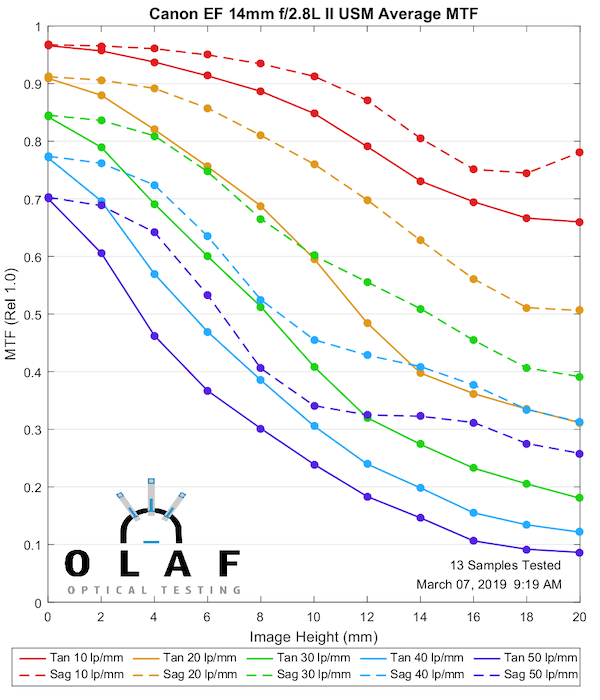
Lensrentals.com, 2019
Canon 20mm f2.8 USM
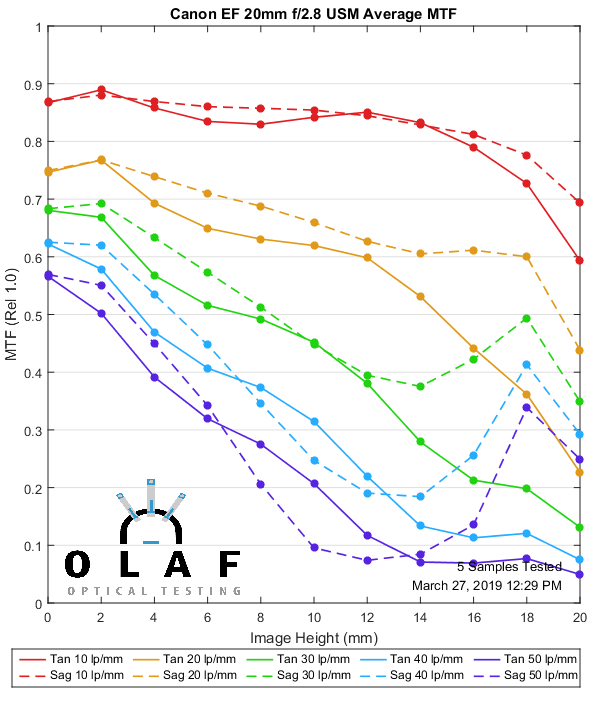
Lensrentals.com, 2019
Canon 24mm f1.4 L Mk II
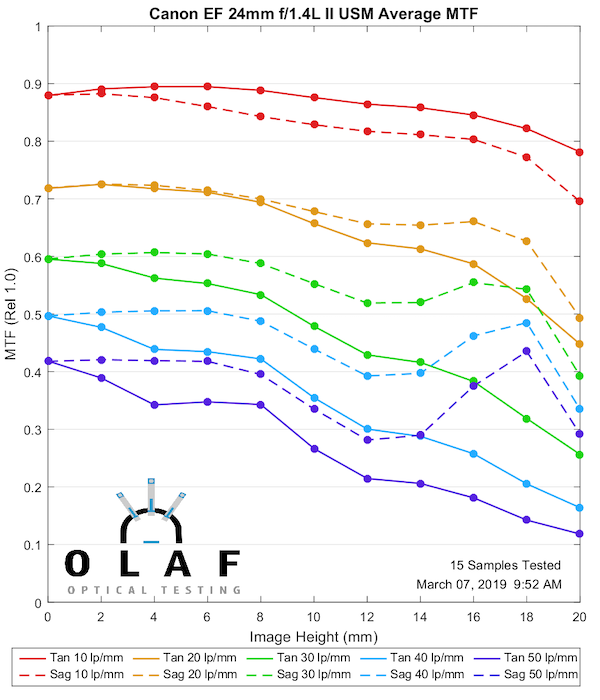
Lensrentals.com, 2019
Canon 24mm f2.8 IS
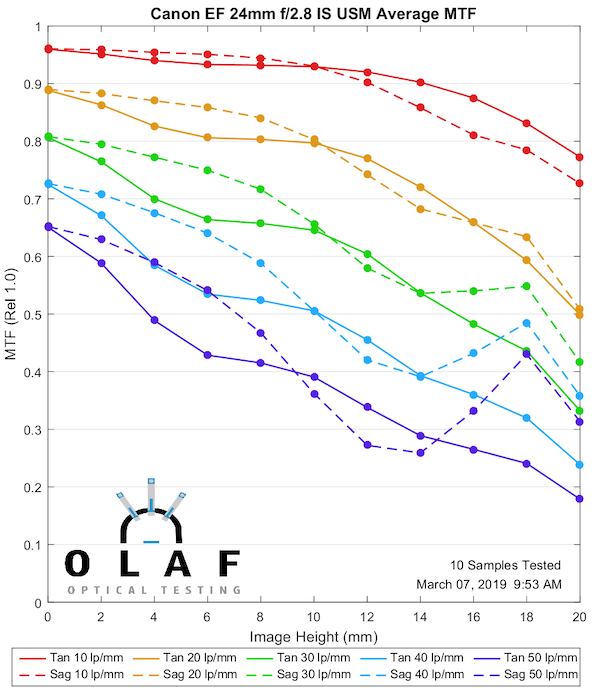
Lensrentals.com, 2019
Canon 28mm f1.8
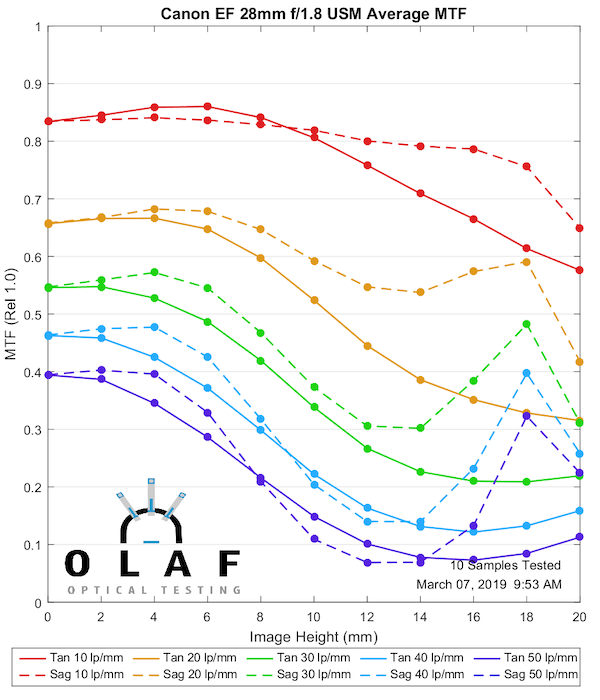
Lensrentals.com, 2019
Canon 28mm f2.8 IS
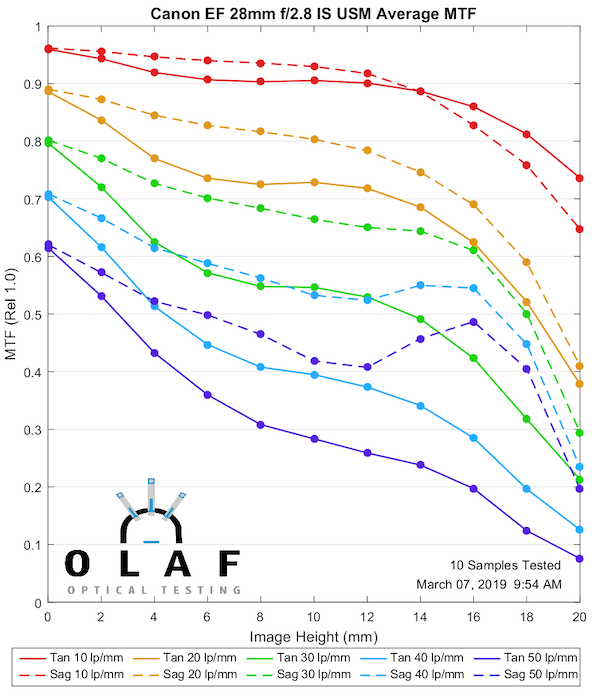
Lensrentals.com, 2019
Canon 35mm f1.4 L
Note – this is a 5 sample chart because we didn’t have many left when we retested for proper cover glass thickness.
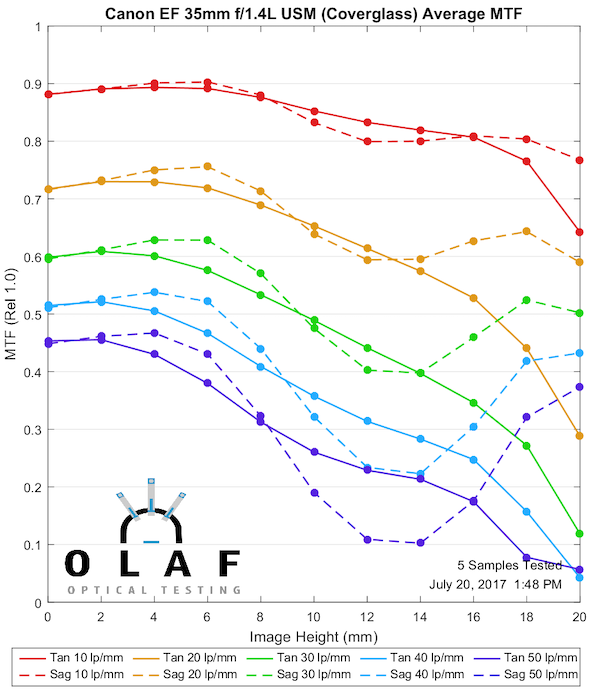
Lensrentals.com, 2019
Canon 35mm f1.4 L Mk II
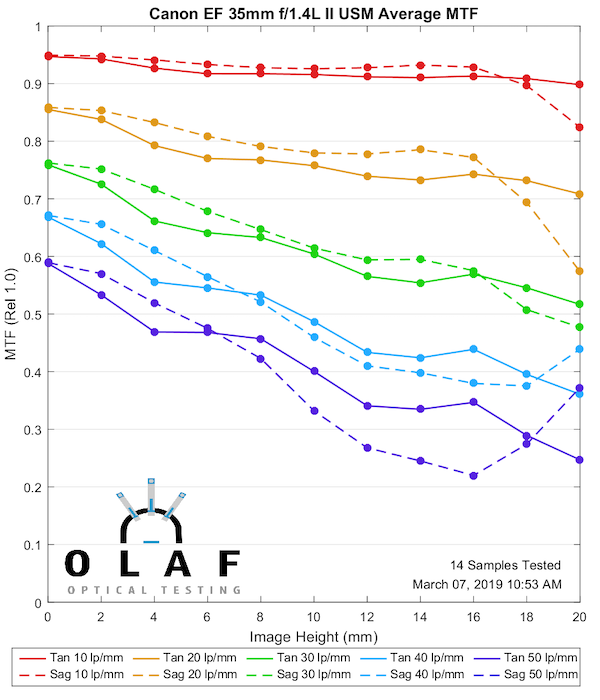
Lensrentals.com, 2019
Canon 35mm f2 IS

Lensrentals.com, 2019
Canon 40mm f2.8 STM
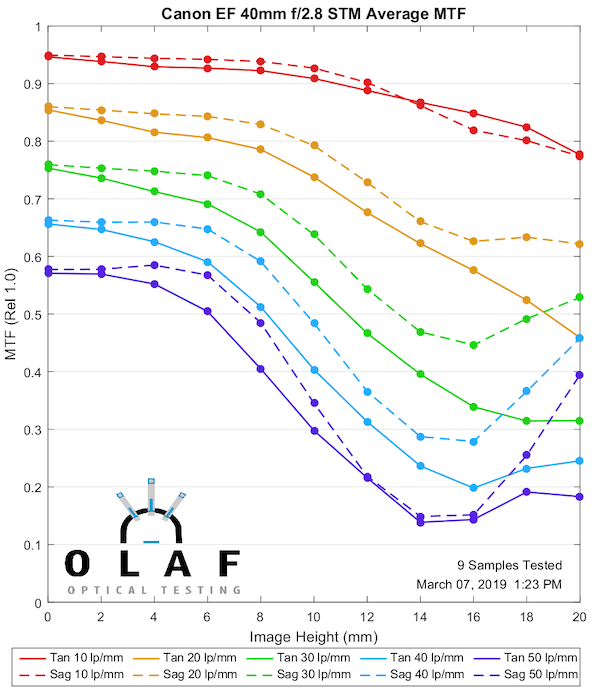
Lensrentals.com, 2019
Canon 50mm f1.2 L
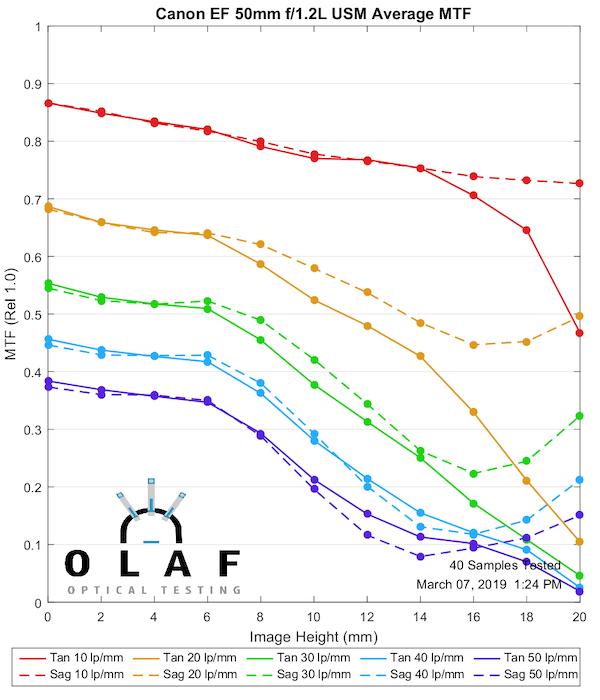
Lensrentals.com, 2019
Canon 50mm f1.4
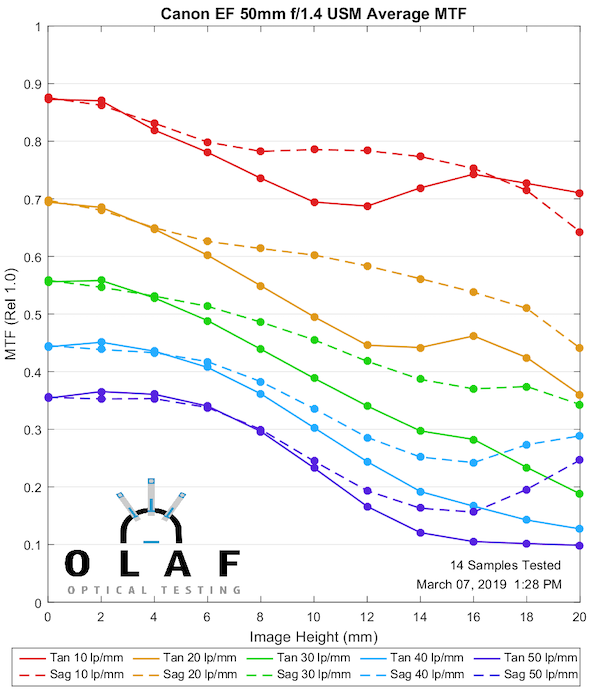
Lensrentals.com, 2019
Canon 50mm f1.8 STM
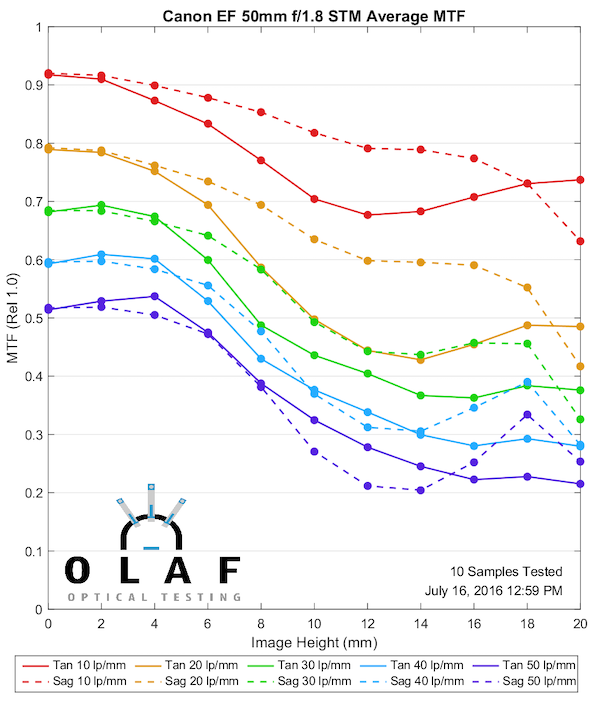
Lensrentals.com, 2019
Canon 85mm f1.2 L Mk II
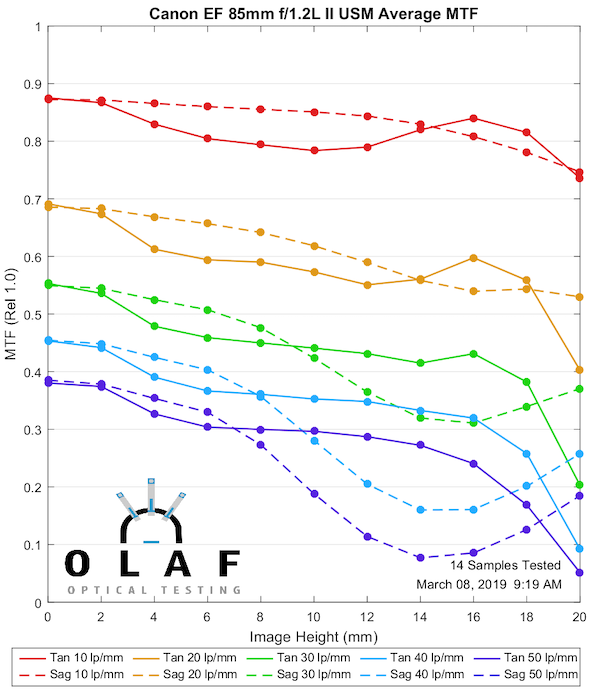
Lensrentals.com, 2019
Canon 85mm f1.4 IS L
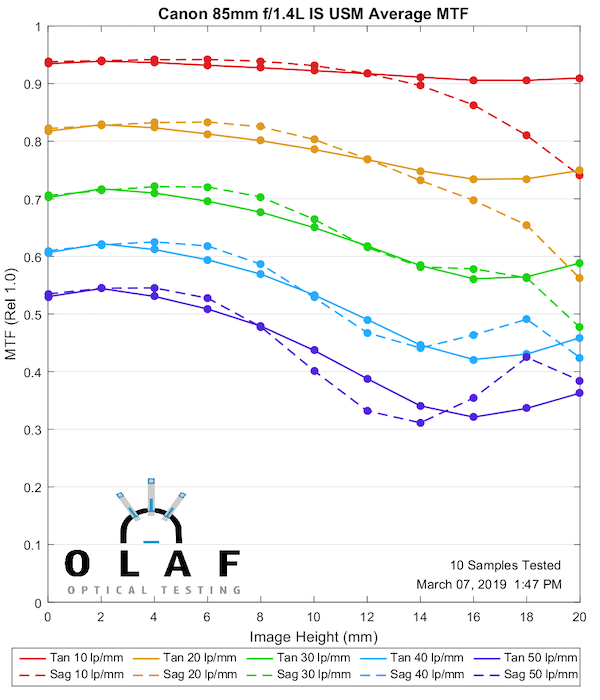
Lensrentals.com, 2019
Canon 85mn f1.8
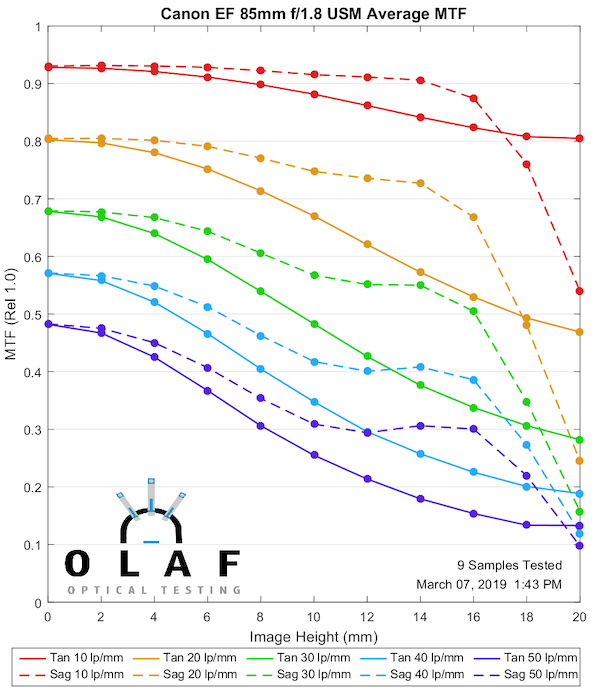
Lensrentals.com, 2019
Canon 100mm f/2
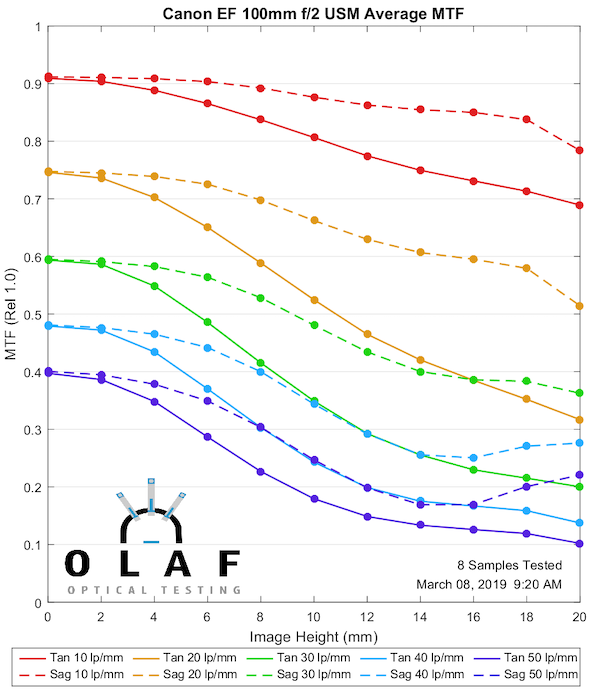
Lensrentals.com, 2019
Canon 100mm 2.8 Macro USM
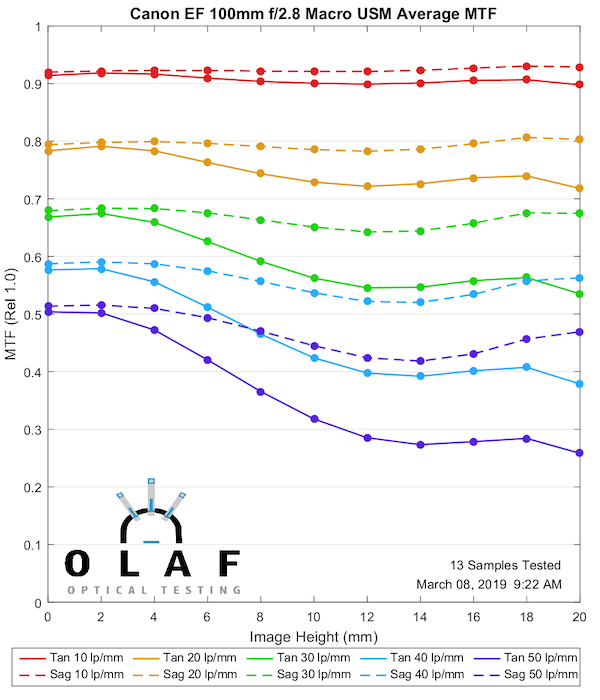
Lensrentals.com, 2019
Canon 100mm f2.8 Macro IS L
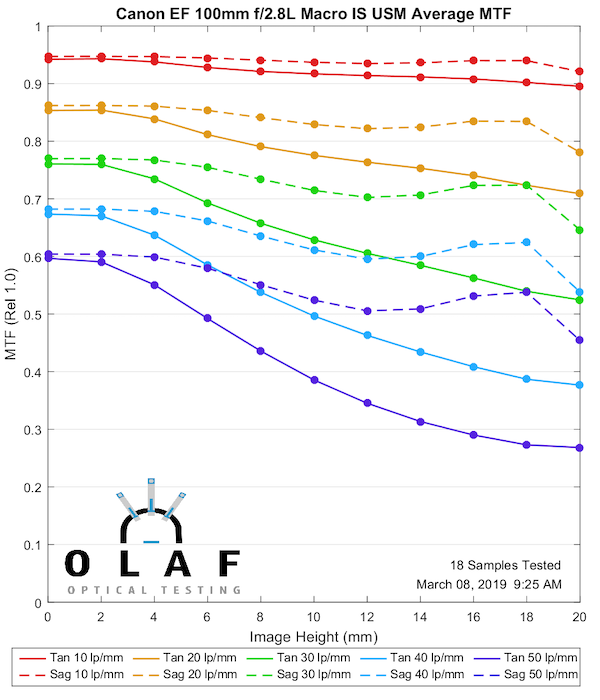
Lensrentals.com, 2019
Canon 135mm f2.0 L
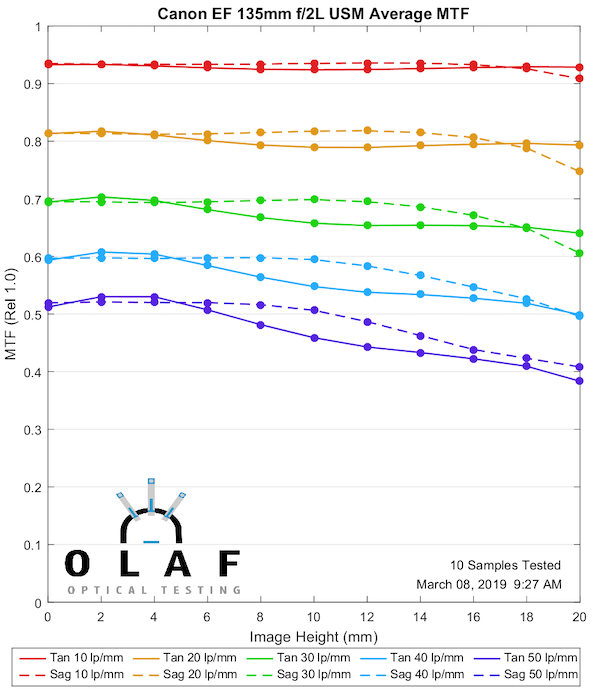
Lensrentals.com, 2019
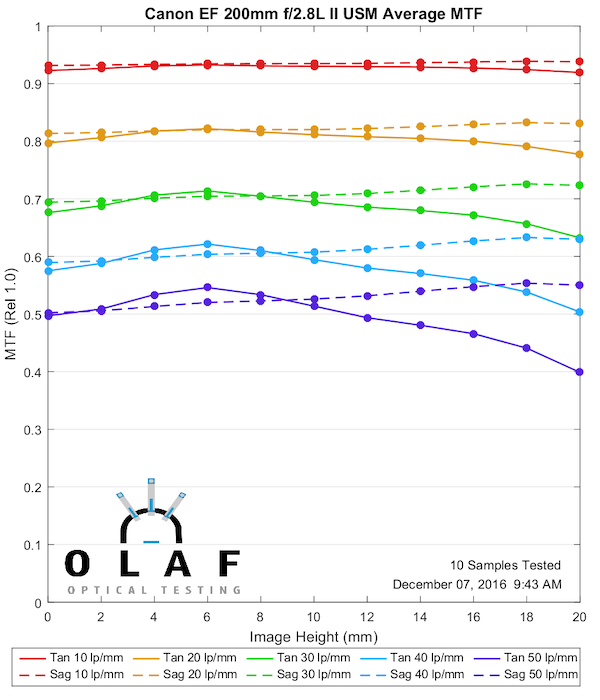
Lensrentals.com, 2019
That’s all the Canon primes we have done except tilt-shifts, which will come out separately.
For a look at all the Just MTF Articles we’ve done so far, be sure to check them out here.
Roger Cicala, Aaron Closz, and Brandon Dube
Lensrentals.com
March, 2019
Author: Roger Cicala
I’m Roger and I am the founder of Lensrentals.com. Hailed as one of the optic nerds here, I enjoy shooting collimated light through 30X microscope objectives in my spare time. When I do take real pictures I like using something different: a Medium format, or Pentax K1, or a Sony RX1R.
-
G Dan Mitchell
-
Roger Cicala
-
Donga
-
Roger Cicala
-
Roger Cicala
-
Roger Cicala
-
Alan Fersht
-
JJason Lee
-
Andreas Werle
-
Hunter45
-
Hunter45
-
Roger Cicala
-
Roger Cicala
-
Someone
-
Michael
-
dadohead
-
Roger Cicala
-
Roger Cicala
-
Florent
-
Ernest Green
-
xeppelin
-
Brandon Dube
-
Max Manzan
-
xeppelin
-
Roger Cicala
-
Roger Cicala
-
Joe Blow
-
Brenda
-
Ed Hassell
-
Samuel H
